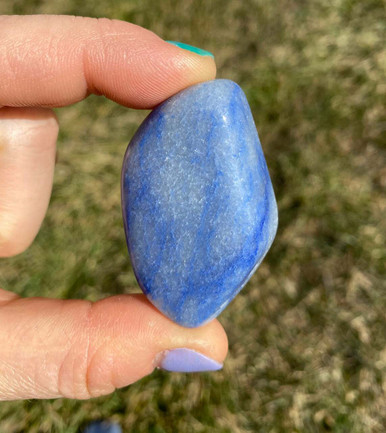Blue Aventurine Meaning, Properties, and Uses
Blue Aventurine Metaphysical Meaning, Properties & Benefits
Blue Aventurine is a stone of inner strength. It helps you to mature spiritually and emotionally, allowing you to open yourself to new levels of intuition and spirituality.
Blue Aventurine strengthens your self-discipline, assisting you in decision-making and matters of the heart. It helps connect your mind to your soul and emotional body.
Blue Aventurine helps to calm intense emotion, and brings calmness and peacefulness. It strengthens your confidence, and helps you to feel less affected by negative influences and energies.
Blue Aventurine Associations

Blue Aventurine Chakra, Zodiac, Element
- Blue Aventurine stimulates the Throat and is also great for helping us connect with our psychic abilities as it also helps us open our third eye chakra.
- It is related to the Zodiac of Aries
- It combines the Elements of Air and Water and gently resonates from the mind to the heart.
How to Use Blue Aventurine
In Meditation
How to Wear
In the Home
Place a blue aventurine in your home for better decision making.
In the home or the office, wherever you need a lightning strike of abundance, this is where you want to place your Aventurine stone.
Blue Aventurine Products
Geology of Blue Aventurine
Blue Aventurine is a variety of quartz. Coarsely crystalline quartz is common in many rocks. Because of crystalline quartz's mechanical and chemical stability, it endures as detrital grains when quartz-bearing rocks break down.
These grains can accumulate as sand and pebbles in sedimentary deposits. Some sedimentary deposits are composed almost entirely of quartz grains which can coagulate over time, leading to the formation of sandstones.
When a quartz-rich sedimentary deposit or a sandstone undergoes high-grade metamorphism (metamorphism is the alteration of a rock due to changes in heat, pressure, or chemical environment), the original material alters to a compact rock composed of interlocking quartz grains known as quartzite.
Aventurine gets its spangled crystal appearance from the sparkling internal reflections from uniformly oriented, tiny inclusions of other minerals.
Depending on what impurities are present in the original sandstone or sedimentary deposit, if aluminous sediments that contain Boron are present, then Dumortierite can occur and disseminate (scatter) within the Quartzite, giving the Aventurine its blue color.













